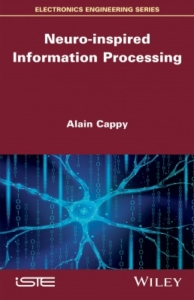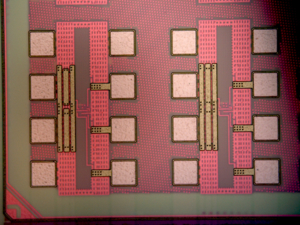Neuro-inspired Information Processing : book by Alain Cappy
An overview of research on bio-inspired systems :
from electronic components to neuron architecture, there is only one step …
Interview with Alain Cappy, former director of IEMN and IRCICA.
Written by Karine Perrot, Publishing Department, Multimedia Communication of the IEMN.

Since the brain is known to be an extraordinary machine, can we use it as an inspiration to design intelligent and energy-efficient systems?
This is the question as fundamental as it is pragmatic that Alain Cappy asked himself when he made a thematic conversion of research on neural circuits, after a long career in electronic components, and to which he tries to answer in his book Traitement neuro-inspiré de l’information, (September 2020).
This pioneering work attempts to synthesize work on neuro-inspired systems for information processing. It presents the essential concepts of electronic information processing and the principles of functioning of the cerebral cortex and discusses the properties and networks of neurons and living and artificial synapses. The energy issue is the main theme of the book, which targets an audience of students and young researchers wishing to move towards this subject.
The researcher’s path started from a twofold observation. Firstly, the multiplication of terminals, linked to the activity of smartphones and computers, is leading to a rapid growth in power consumption, which is now equivalent to 15% of global consumption. Secondly, current technology has reached its physical limits, with the end of Moore’s Law, which predicted a doubling of microprocessor power every eighteen months. Adding the energy constraint, it was therefore necessary to completely revise the architecture of the information processing system, and Alain Cappy’s conversion became obvious :
« I had been working for a long time on ultra-fast but high-consumption devices whose consumption cannot be significantly reduced. It was while looking for more energy efficient architectures that the idea came to me to look at information processing in the brain and therefore at the properties of neurons. I was surprised to find that the physics of neurons was similar to that of the components (field effect transistors) that I had been working on since the beginning. One can even make a formal analogy between the insulating membrane that surrounds the neuron and the insulator at the base of the transistor effect in semiconductor devices. »
Moving forward on familiar ground, and surrounding himself with a team of researchers, he quickly went into detail. But it was necessary to go beyond the biological model: « technology is not copying but rather trying to do things differently and better ».
That’s how the team built artificial neurons that are 1,000 times more energetically efficient than a living neuron, that is, they use about 1,000 times less energy to create the same electrical impulse. The reason is simple: an electronic neuron being 1000 times smaller than a living neuron, the ratio of sizes determines the ratio of energies.
Alain Cappy has opened up two avenues of research in the field of bioinspired architectures, which today constitute a research axis at IEMN and IRCICA. One, with François Danneville and Christophe Loyez, aims to draw inspiration from the architecture of the brain to create intelligent and efficient vision systems. The other is a therapeutic approach, with Virginie Hoel, which involves the interaction of living neurons with artificial neurons to form implants for the treatment of neurodegenerative diseases. The Axorus start-up, created in 2019 and dedicated to the treatment of AMD (age-related macular degeneration), aims to enhance the value of this research.
https://onlinelibrary.wiley.com/doi/book/10.1002/9781119721802
















